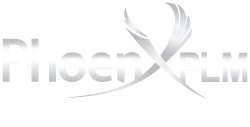
ADVANCES IN PLM CAN DELIVER MULTIPLE BENEFITS
(Manufacturers’ Monthly Magazine, September, 2012)
Latest developments in Product Lifecycle Management (PLM) software can deliver significant benefits across a wide spectrum of industry through smarter decisions and better products.
Vice president and general manager for ASEAN/Australia of Siemens PLM Software, Rajiv Ghatikar, explains that there are three broad pillars in the company’s PLM offering. These are computer aided functions (design, manufacturing and engineering), plus collaborated product data management (CPDM), and digital manufacturing.
“CAD drives the entire product lifecycle – from simulation and analysis through tooling design, manufacturing, assembly, service and support. The next generation NX design tools from Siemens offer greater power, flexibility and productivity,” he told Manufacturers’ Monthly.
“NX CAD’s Synchronistic Technology allows the pooling of information without history attached to it, so that a part can be brought in with all its dependencies and modelling can be history free. In this way, clutter is reduced and NX can perform 100 times faster than earlier CAD technology.
“The aim is to help companies to better manage development processes and achieve best practice, with a strong focus on providing a clearer view of the information needed to make smarter and faster decisions.”
Recent releases by Siemens include NX CAD, NX CAM, NX CAE, and Teamcenter 9.
Chris Gielens, PLM solutions architect at Siemens Australian distributor, PhoenxPLM, says that Teamcenter is an open-ended scalable system that can be integrated with a range of other applications, including Microsoft Office and leading CAD/CAM tools.
“Teamcenter can connect team members anywhere in the world at any time and drive productivity with a single source of product and process knowledge,” he said.
“This is a product management system with layer-upon-layer of data that can be turned into information that is secure and provides traceability throughout a products entire life cycle. It is a means of providing intelligently integrated information to deliver higher quality products.
“Globally distributed design chains can collaborate more easily, communicate visually across an entire product life cycle, and identify opportunities to automate common functional processes throughout the lifecycle.”
Fast forward
Last year PhoenxPLM implemented Unigraphics NX7.5 CAD and CAM software at leading V8 Supercars team Ford Performance Racing (FPR) and is currently introducing Teamcenter to the company’s operations.
With eleven production departments, including a machine shop, fabrication shop, and composite shop, FPR is a vertically integrated company that builds 90 percent of its Ford Falcon race cars in-house.
According to FPR engineering manager, Mathew Nilsson, the introduction of PLM is resulting in major benefits and assisting the company to develop the Car of the Future.
“The time required to manufacture vehicle front rails has been reduced by 1.5 weeks, cross members by 2 weeks, and engine sumps by 2 days. Reductions in the cost of car build and maintenance are being achieved, and we can more easily comply with new regulations, such as a common roll cage and chassis,” he explained.
“Our approach to manufacturing includes a big emphasis on jigging quality and accuracy, which is assisted by the latest CAD/CAM applications as part of the PLM umbrella. More controlled and common parts are being produced, which is also contributing to an increase in the speed that we produce cars.
“The implementation of Teamcenter will enable the integration of departments and result in better workflow management, decision-making transparency, improved communications and efficiency, and rapid response times in design and manufacturing.”
PLM future directions
Siemens PLM Software director of product management, Mike Rebrukh, advises that the company will release NX 8.5 in October with a continued focus on productivity, intelligently integrated information, and future-proofed architecture.
He believes future PLM developments will include an emphasis on quicker usability, increased levels of data reuse throughout the design process, enhanced Teamcenter integration to manage the data of massive products, and the ability to answer questions very quickly and track issues with geometry.
“Product design solutions will be increasingly efficient, providing iterations in reduced time, and there will be increased flexibility in part creation and editing including ‘what if’ design studies,” he said.
“There will also be increased levels of multi-CAD collaboration, flexible tools for collaborative design, and creation of design modules to help make changes. Simulation will include earlier evaluation of cross-discipline trade-offs, and optimised shape will drastically reduce waste.”
PhoenxPLM
www.phoenxplm.com.au
Ford Performance Racing
www.fpr.com.au
